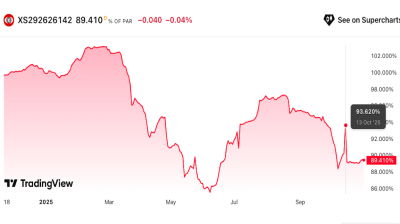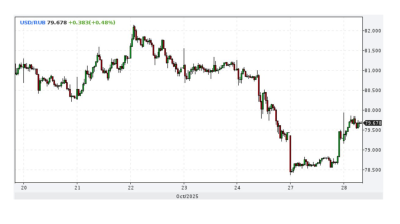Russian manufacturing firms registered a solid upturn in the health of the sector in March, according to the latest PMI data from S&P Global.
The seasonally adjusted S&P Global Russia Manufacturing Purchasing Managers’ Index posted 53.2 in March, down from 53.6 in February, to signal a solid improvement in operating conditions across the Russian manufacturing sector. (chart) Any result above the no-change 50 mark is an expansion.
“Overall growth was supported by a faster rise in output and a further increase in new orders,” S&P said. “Output at Russian goods producers increased at a solid pace at the end of the first quarter, as the rate of growth quickened to the fastest for three months. Greater new orders and strong client demand contributed to the upturn in production. Although at a slower pace than that seen in February, new sales made by Russian manufacturers continued to increase during March. The rise in new orders was the second-fastest since April 2019, as some companies noted that reduced competition, new customer referrals and import substitution helped to boost sales. That said, improvements in demand conditions were largely confined to the domestic market, as new export orders contracted further in March.”
Weighing on the expansion in new sales was another monthly fall in new export orders as sanctions hurt Russia’s external trade.
At the same time, input costs rose at a marked pace, with operating expenses increasing at the sharpest rate for almost a year, as while inflation is falling, it remains elevated at 11% in February.
Efforts to boost sales dampened hikes in selling prices, despite output costs rising at the fastest rate since April 2022.
However, the rise in domestic new orders and a slower fall in backlogs of work sparked another round of job creation. Unemployment in Russia is currently at an all-time low of 3.5%. Employment rose for the fifth month running, with the pace of expansion accelerating from February. The rate of job creation was among the fastest since November 2018, as firms adjusted workforce numbers upwards to account for greater production requirements.
Amid stronger expectations for future output, employment rose at a solid pace. A more upbeat outlook also spurred stockpiling activity, as post-production inventories rose at the steepest pace since November 2008, S&P said.
Cost burdens at Russian goods producers remained the biggest problem and rose at a sharper rate in March. Input prices increased at a marked pace that was the steepest since May 2022. Hikes in supplier prices and unfavourable exchange rate movements reportedly pushed up operating expenses. Companies passed on some of the uptick in costs to their clients through a faster rise in selling prices during March.
“Although the pace of inflation was only modest overall, it quickened to the sharpest for almost a year,” S&P said.
Unsurprisingly, the decline in foreign client demand worsened in February, as new export sales fell strongly and at the steepest pace in 2023 so far.
Although backlogs of work fell for the third successive month, the rate of contraction was only marginal and the slowest in the aforementioned sequence. Increased new order inflows reportedly placed pressure on capacity.
Efforts to stockpile were reflected in back-to-back expansions in both pre- and post-production inventories. The latter grew at the steepest pace since November 2008.
Finally, Russian goods producers expressed stronger optimism in the outlook for output over the coming year at the end of the first quarter. Opportunities for import substitution, investment in product development and hopes of further expansion in new order inflows all reportedly drove confidence. The level of positive sentiment was the second highest for four years and was above the long-run series average.
Data

Russia’s manufacturing PMI falls to its lowest level since May 2022 in October
Russia’s manufacturing sector saw a deeper contraction in October, with output, new orders, and business confidence all weakening, according to the latest Purchasing Managers’ Index (PMI) data from S&P Global, published on November 1.

Czech growth accelerates as domestic demand-side pressure builds
The Czech economy delivered an unexpected acceleration in the third quarter, marking a clear shift from its earlier position as a regional underperformer to one of Central and Eastern Europe’s fastest-growing economies.

Eurobonds of Istanbul-listed Zorlu units offer attractive yields amid rating downgrades and no default expectation
Debut paper currently offering 14-15% yield.

Ruble strengthens as sanctioned oil companies repatriate cash
The Russian ruble strengthened after the Trump administration imposed oil sanctions on Russia’s leading oil companies, extending a rally that began after the Biden administration imposed oil sanctions on Russia in January.



